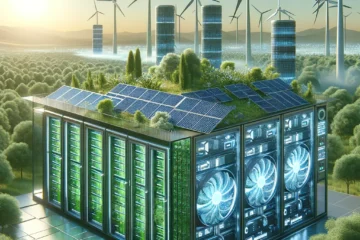The Emergence of Green Technology in Modern Education
In recent years, the integration of green technology in education has marked a significant shift in teaching methodologies. By leveraging sustainable technology, educators are not only imparting knowledge but also instilling a sense of responsibility towards the environment. This change reflects a growing recognition of the critical role that education plays in shaping future generations’ attitudes towards renewable energy and environmental conservation.
Nurturing Environmental Stewardship
The introduction of green technology into classrooms has given rise to a new generation of environmentally conscious students. Through interactive and engaging tech tools, learners are exposed to the complexities of ecological balance and the importance of renewable energy sources. This practical approach fosters a deeper understanding and appreciation of sustainability.
Integrating Renewable Energy Concepts
Teaching renewable energy concepts through technology provides a tangible connection between theoretical knowledge and real-world applications. Students get to explore various renewable energy sources, such as solar and wind power, through simulations and virtual labs. This hands-on experience is crucial in developing skills and enthusiasm for green technology innovations.
Cultivating a Sustainable Mindset
By incorporating green tech tools in education, students are encouraged to think critically about their role in combating climate change. This not only prepares them for future technological advancements but also instills a sustainable mindset, crucial for addressing the environmental challenges of our time.
Technological Advancements: A Catalyst for Green Education
As the world embraces technological advancements, their application in educational settings is revolutionizing how sustainability is taught. These advancements are making learning more accessible, interactive, and aligned with current environmental issues.
Innovative Learning Tools
The use of augmented reality (AR), virtual reality (VR), and other digital tools has transformed traditional learning methods. These technologies offer immersive experiences that bring complex environmental issues to life, enabling students to visualize and understand the impact of climate change and the importance of renewable energy.
Enhancing Engagement Through Tech
Advanced technology in education has increased student engagement significantly. Interactive models and simulations of ecological systems, for instance, allow students to experiment with and understand the consequences of different environmental scenarios, making learning both fun and impactful.
Preparing for a Tech-Driven Future
The inclusion of advanced technology in sustainability education equips students with the skills needed for the future job market. As green technology sectors grow, students who are familiar with these advancements will be better prepared to contribute effectively in their future careers.
Addressing Climate Change Through Educational Technology
In the face of global climate change, educational institutions are increasingly adopting green technology to teach about environmental conservation and the impact of human activities on the planet.
Climate Education Using Interactive Tech
Interactive technologies like data modeling and simulation software offer students a hands-on approach to understanding climate patterns and anomalies. This practical experience is crucial in comprehending the severity of climate change and the urgency of mitigation efforts.
Fostering Critical Thinking
Green technology in education plays a vital role in developing critical thinking skills. By analyzing data and trends related to climate change, students learn to evaluate information critically, a skill that is essential in understanding and addressing environmental issues.
Encouraging Action and Advocacy
Education through green technology not only informs but also empowers students to take action. Through project-based learning and technology-driven research, students can become advocates for climate change mitigation, promoting sustainability in their communities.
Leveraging Data Analytics in Sustainability Education
Data analytics is increasingly becoming a pivotal aspect of green technology education. The ability to analyze and interpret environmental data is crucial for understanding and addressing sustainability challenges.
Understanding Environmental Data
Incorporating data analytics into green technology education enables students to grasp the significance of data in environmental decision-making. By analyzing trends and patterns, learners gain insights into the effects of human activities on the environment and the effectiveness of various sustainability initiatives.
Data-Driven Problem Solving
The use of data analytics tools in the classroom encourages a problem-solving approach to environmental issues. Students learn to apply data in developing sustainable solutions, a skill that is highly valuable in the technology-driven world.
Preparing for a Data-Intensive Future
As our world becomes increasingly data-driven, equipping students with data analytics skills is essential. This preparation is particularly crucial in the field of green technology, where data analysis plays a key role in advancing sustainability initiatives.
In conclusion, green technology in education is more than a trend; it’s a necessity for preparing future generations to tackle environmental challenges. By integrating sustainable tech teaching into the curriculum, educators are not only enhancing learning experiences but also shaping responsible, environmentally conscious individuals. As we move forward, the role of technology in teaching sustainability will undoubtedly grow, reflecting the evolving nature of both education and environmental stewardship.




